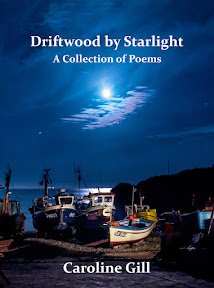Author: Lynn Hopkins (picture of cover used with poet's permission)
Photographs: Moelwyn Hopkins
Illustrations: Rhian Elin Thomas
Price: £4.50
ISBN: 978-0-95674547-3-6
'From a lofty bed,
two hands clasp a kernel
as if in prayer'
from 'The Grey Invader' by Lynn Hopkins
It is hard to think of Swansea without picturing the curve of the bay. It is an iconic yet ever-changing seascape that can be enjoyed from numerous angles. If we associate Peter Thabit Jones with the view from Kilvey Hill, we can now link Lynn Hopkins with those sweeping vistas from another vantage point where 'sea breezes blow', namely the hillside that 'stands in stillness', supporting Oystermouth Cemetery.
This 'dead community' has found a special place in Lynn's affections. For her the cemetery is a place of 'peace in beautiful surroundings'. It is a place that has inspired her first collection, a sparkling quiverful of twelve poems about the wild creatures that make their home around the graves. They are very much alive, and for Lynn their presence proves that 'life goes on, even in a dead community'.
I have known Lynn for some years, although our paths have not crossed frequently. She is currently a student on the part-time humanities degree at Swansea University.
It was a privilege to attend the recent launch of Lynn's volume, and to hear the poet reading her own work. Artistic acheivement runs in the family: Lynn's husband was also a published poet. It was a thrill to meet the poet's daughter, Rhian, whose delightful illustrations are the perfect complement to her mother's words and to her brother, Moelwyn's photography. It is not often that three members of a family have worked together on a project of this nature. Publisher, Peter Thabit Jones, adds that Lynn's poems are 'accessible, sound-textured and tender'. He makes the shrewd observation that although they are written in English, Lynn is bilingual and brings to her work that added dimension or 'sense of craftsmanship employed by poets working in Welsh.' Lynn's detailed approach is both arresting and engaging: the poet weaves her stories of the wild creatures into a compelling warp and weft of carefully chosen words.
In this poem-sequence, we encounter the statue on the cover (see above) of a pensive woman, clutching her 'private book'. Word and image combine to conjure up a sense of the pain of loss, but they also manage to convey a fragile sense of future: the reader is encouraged to consider the possibility of a time when tears will be no more. But for the present, this woman of stone has to suffer the dubious company of her faithless feathered companions, the 'Magpie, raven, and rowdy rook'.
The choice of vocabulary keeps the reader alert. Just when we are tempted to feel that all is tranquil and serene, with butterflies fluttering over 'this haven of rest', we are reminded that it is folly to think of this place as an entirely peaceable kingdom. Instead, we are confronted with the stark reality of the horrors of death and war and 'butchered hearts'. The black cat 'with two sides' to its face sums up this paradox to perfection.
So thank you, Lynn, for introducing us to your new circle of companions - the snail, the 'wily' fox, the 'brown owls' on their 'brittle boughs' - and all the other cemetery dwellers. Thank you for helping us to appreciate the world around us in a new way from the perspective of a place where sea meets sky, and where heaven and earth are bound in life and death.
















